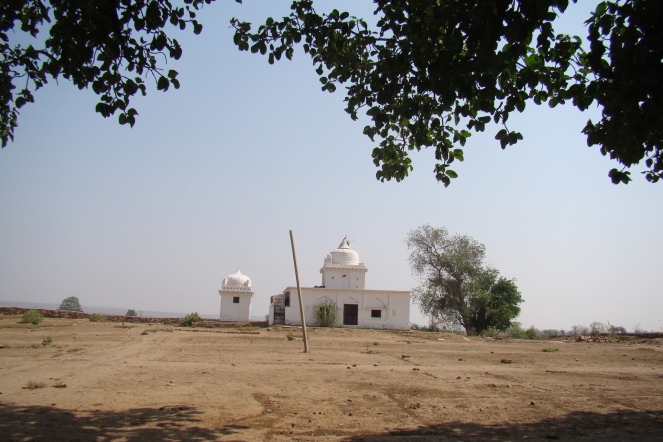Guest Blog by: Manoj Misra, Yamuna Jiye Abhiyaan
Rivers are often seen merely as carriers of utilizable water and little more. Such utilization could be for supply of water to meet human domestic, commercial, irrigation or industrial needs or as a motive force to produce electricity. That there could be far more to a river than water flowing in it is rarely appreciated far less investigated. The reason also is that in case of perennial rivers water flowing in them tends to hide from public view a lot residing in their interiors, including their living and non living components. So a drought, notwithstanding its adverse impacts on water dependent people and their commensals[i], is an opportunity nevertheless to easily see what is otherwise normally hidden.


So, it was as a rare opportunity, when on a recent visit from 7 – 10 June 2016, in company of Prof. Brij Gopal ji, I covered several stretches of river Ken and its tributaries like river Banne and Patne in district Chattarpur and Panna in the Bundelkhand region of Madhya Pradesh and found the river san its flow except water standing in pools, some of which according to locals were of indeterminable depth. In short the river bed was wide open to investigation and documentation. I am no expert in geology or geo-morphology but could see and appreciate what was on offer, peppered by earthy wisdom of the local people.


River Ken (427 Km) is one of the major right bank tributary of river Yamuna and along with river Betwa drains large tracts in the Bundelkhand region of MP and UP. River Sonar, Bearma, Banne, Patne, Mirhasan and Urmil constitute its key tributaries. Crossing the Bijawar-Panna hills, the Ken river cuts a 60 km long, and 150-180 m deep gorge. (https://en.wikipedia.org/wiki/Bijawar-Panna_Plateau). It forms for a considerable stretch the border of Chhattarpur and Panna districts of Madhya Pradesh.


7 June 2016
Visited Benisagar dam (perhaps the oldest such hydrological structure in Bundelkhand region), the famous Ranne Falls in the Ken Ghariyal Sanctuary as well as the Bariyarpur barrage on the river Ken. In absence of flowing water no fall was to be seen, and both the Benisagar dam and the Bariyarpur barrage were at their dead storage level. The geo-morphology of the gorge at Ranne falls was amazing and picturesque.


The colonial period barrage on river Ken upstream of Ranne falls at Bariyarpur was at its dead storage level.
8 June, 2016


Crossing the Panna hills and the stone dry river Banne, visited the mythological site of Pandavan, in the middle of Ken river bed, where the river suddenly enters an almost 50 ft deep narrow gorge. This is the point where the river Mirhasan enters it from the right. While the mythological version is that the river turned itself into a fish and slipped underground as the Pandavas (Mahabharat fame) tried to stop it, but visually it seems as if a sudden rupture has taken place along the centre of the river bed, since the stony river bed is still spread well over 100 mtrs on both sides of the narrow gorge. Countless pot-holes in the stony (predominantly sandstone) river bed also add to the mystery and charm of the disappearing river act. Locals still revere and offer obeisance to five red colored round stones which presumably represent the five Pandava brothers.


Later proceeded to Pawai town (on river Patne) with an interesting pyramidal hill and documented the confluence the river Patne with river Ken at village Chandanpur.


9 June 2016
Visited Panna National Park and documented the river within the park, as well as the sehas (interesting sudden but deep falls that carry small rivulets all ending in the river).


Gehrighat to Sakara is another wide gorge (an extension of the Pandavan Gorge) of river Ken that lies within the park and is likely to be drowned underneath the vast reservoir of the proposed dam at Daudhan (within the park) to be built as part of the Ken Betwa river link project.
10 June 2016


Visited the Rangwan Barrage on river Ken and the proposed dam site, little upstream for the KB link at the Daudhan village. Both were water less.


Epilogue
While a brief visit by non domain expert has its limitations, but even then two things emerged very clear from it:
- River Ken is a delicate river with an uncertain hydrology, but amazing geo-morphology.
- Panna hills with a three layered strata is a geo-morphological marvel and it calls for a detailed expert investigation and documentation.


A quick look at the Environment Impact Assessment of the proposed Ken Betwa River Link Proposal and perusal of the minutes of the meetings of the Expert Appraisal Committee of MoEF on River Valley projects where Ken Betwa project was discussed shows that NONE of the issues highlighted here have been documented or discussed. It would be a real pity if the so called developmental projects (proposed KB link in particular) were to bring about adverse and even permanent changes to the river-forest – geological system in Panna as it is sure to do, without even proper impact assessment, appraisal or public consultations.
Manoj Misra, Yamuna Jiye Abhiyaan (indiariversweek2014@gmail.com)




Note: The author would like to thank Prof. Brij Gopal who very kindly accompanied and facilitated the visit despite searing June heat.


END NOTES:
[i] According to Wikipedia, Commensalism, in ecology, is a class of relationships between two organisms where one organism benefits from the other without affecting it.



इस लेख ने तो केन की यात्रा ही करा दी.
केन- बेतवा लिंक के लिए जल्दी मचाने वाली उमा जी को भी कोई यह यात्रा कराओ और फिर पूछो कि केन – बेतवा लिंक होना चाहिए कि नहीं. आदरणीय मनोज जी और सैंड्रप… दोनों का आभार
अरुण तिवारी
LikeLike